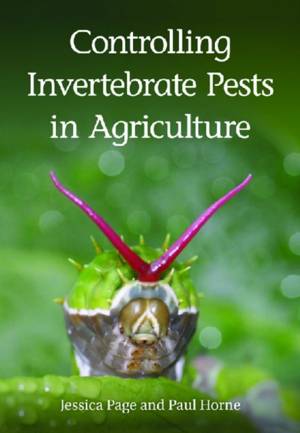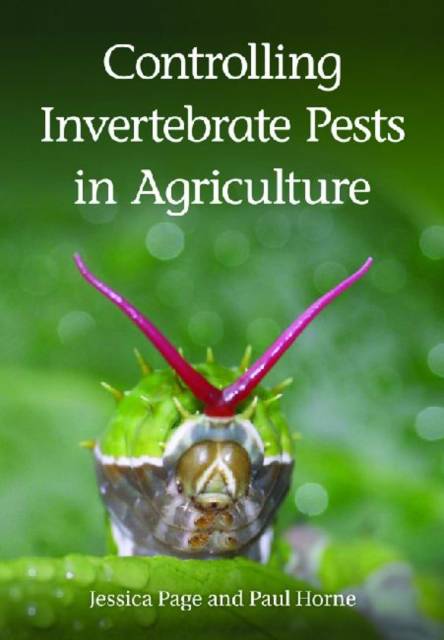
- Afhalen na 1 uur in een winkel met voorraad
- Gratis thuislevering in België vanaf € 30
- Ruim aanbod met 7 miljoen producten
- Afhalen na 1 uur in een winkel met voorraad
- Gratis thuislevering in België vanaf € 30
- Ruim aanbod met 7 miljoen producten
Zoeken
€ 57,45
+ 114 punten
Omschrijving
Controlling Invertebrate Pests in Agriculture discusses the principles of pest management and relates this to historical methods as well as current and future directions. It describes current practice, the concept of agricultural ecosystems, the role of pesticides and cultural control options. A separate chapter covers biological control and the different ways in which this may be implemented.
The book provides a detailed examination of the application of pesticides, the different types that are available and how they may be integrated into more holistic approaches. A summary of all available pest control measures is given to allow the reader to decide which approach is best to adopt. The authors clearly describe why the most ecologically sound methods are not always adopted, but also explain why they can be adopted with great success.
Examples of successful implementation of Integrated Pest Management are highlighted, and also a discussion on what is required in the future to achieve successful control of pests in a sustainable manner.
* Written in plain English. It can be understood by entomologists, university researchers and also farmers and agronomists and other advisors to the agricultural industry
* A clear thinking approach to pest management, presenting an analysis of first "why" a decision is made and second "how" that decision is made
* Helps better decisions to be made on pest management
The book provides a detailed examination of the application of pesticides, the different types that are available and how they may be integrated into more holistic approaches. A summary of all available pest control measures is given to allow the reader to decide which approach is best to adopt. The authors clearly describe why the most ecologically sound methods are not always adopted, but also explain why they can be adopted with great success.
Examples of successful implementation of Integrated Pest Management are highlighted, and also a discussion on what is required in the future to achieve successful control of pests in a sustainable manner.
* Written in plain English. It can be understood by entomologists, university researchers and also farmers and agronomists and other advisors to the agricultural industry
* A clear thinking approach to pest management, presenting an analysis of first "why" a decision is made and second "how" that decision is made
* Helps better decisions to be made on pest management
Specificaties
Betrokkenen
- Auteur(s):
- Uitgeverij:
Inhoud
- Aantal bladzijden:
- 128
- Taal:
- Engels
Eigenschappen
- Productcode (EAN):
- 9780643103351
- Verschijningsdatum:
- 29/06/2012
- Uitvoering:
- Paperback
- Formaat:
- Trade paperback (VS)
- Afmetingen:
- 171 mm x 248 mm
- Gewicht:
- 326 g

Alleen bij Standaard Boekhandel
+ 114 punten op je klantenkaart van Standaard Boekhandel
Beoordelingen
We publiceren alleen reviews die voldoen aan de voorwaarden voor reviews. Bekijk onze voorwaarden voor reviews.











